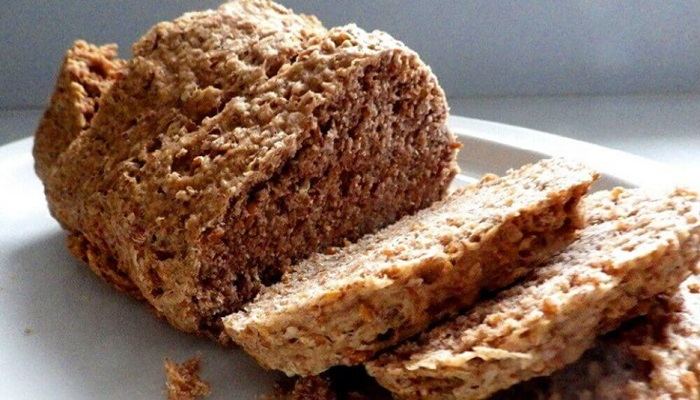Choosing the right bread is crucial for individuals managing diabetes. The best wheat bread for diabetics should have a low glycemic index, be rich in fiber, and contain whole grains that help control blood sugar levels. This article explores the top choices for diabetic-friendly wheat bread, providing detailed recipes and insights into their cultural significance. By understanding how to select and prepare these breads, diabetics can enjoy delicious meals without compromising on health.
Understanding Whole Grains
Whole Grains: Whole grains are essential for a diabetic diet because they provide complex carbohydrates that digest slowly, preventing rapid spikes in blood glucose. They also offer vital nutrients like magnesium, chromium, omega-3 fatty acids, and folate, which support overall health.
Benefits of Whole Grain Bread: Whole grain bread made from 100% whole wheat flour can improve insulin sensitivity and reduce the risk of heart disease. It provides sustained energy release, making it an excellent choice for those with diabetes.
Low Glycemic Index Ingredients
Low Glycemic Index (GI) Foods: Foods with a low GI release glucose gradually into the bloodstream, helping maintain stable blood sugar levels. Ingredients such as oats, barley, and legumes contribute to a lower GI rating when included in bread recipes.
Ingredients Needed for Low GI Bread
- 2 cups whole wheat flour
- 1/2 cup rolled oats
- 1/4 cup ground flaxseeds
- 1 teaspoon baking soda
- 1 teaspoon salt
- 1 tablespoon honey or agave nectar
- 1 cup water or unsweetened almond milk
- 2 tablespoons olive oil
Step-by-Step Process: Preheat your oven to 375°F (190°C). In a large bowl, mix the whole wheat flour, oats, flaxseeds, baking soda, and salt. Add honey or agave nectar, water or almond milk, and olive oil. Stir until well combined. Pour the mixture into a greased loaf pan. Bake for about 45 minutes or until a toothpick inserted into the center comes out clean. Let cool before slicing. This bread offers a hearty texture and mild sweetness that satisfies without causing blood sugar spikes.
High-Fiber Content
Fiber-Rich Bread: Fiber plays a critical role in regulating blood sugar by slowing down carbohydrate absorption. Including high-fiber ingredients like psyllium husk and chia seeds can enhance the nutritional profile of wheat bread.
High-Fiber Whole Wheat Bread Recipe
- 1/4 cups whole wheat flour
- 1/4 cup psyllium husk powder
- 2 tablespoons chia seeds
- 1 tablespoon active dry yeast
- 1 tablespoon honey or maple syrup
- 1 teaspoon salt
- 1/4 cups warm water
Step-by-Step Process: Dissolve yeast in warm water and let sit for 10 minutes until frothy. In a large bowl, combine whole wheat flour, psyllium husk powder, chia seeds, honey or maple syrup, and salt. Add the yeast mixture and stir until a dough forms. Knead the dough on a lightly floured surface for about 10 minutes. Place in a greased bowl, cover, and let rise for 1 hour. Shape into a loaf and place in a greased pan. Let rise again for 30 minutes. Preheat oven to 350°F (175°C) and bake for 30-35 minutes. This bread is dense and filling, perfect for supporting a balanced diabetic diet.
Cultural Significance
Historical Roots: Many traditional diets around the world emphasize simple, wholesome ingredients that align perfectly with diabetic-friendly bread. Mediterranean cuisine, for example, focuses on fresh produce, lean proteins, and whole grains, promoting longevity and vitality.
Regional Variations: Different cultures have developed unique approaches to preparing healthy bread. In Scandinavia, rye bread is a staple, known for its robust flavor and high fiber content. Indian cuisine incorporates multigrain flatbreads like roti and paratha, reflecting a balance between nutrition and tradition. Exploring these regional dishes adds diversity and excitement to a diabetic’s diet while honoring culinary heritage.
Social Gatherings: Sharing meals with family and friends can enhance the dining experience and provide emotional support during the journey of managing diabetes. Cooking together and enjoying homemade bread can foster connections and create lasting memories. The communal aspect of preparing and sharing food enriches the cultural significance of these traditions.
Conclusion
In conclusion, choosing the best wheat bread for diabetics involves selecting options with a low glycemic index, rich in whole grains, and high in fiber. By understanding the nutritional value and cultural significance of these breads, diabetics can make informed choices that promote both physical and emotional well-being. Incorporating them into daily meals not only supports blood sugar management but also connects us to a rich culinary heritage that values nourishment and community. Through mindful eating and thoughtful preparation, diabetics can enjoy flavorful and satisfying bread that nourishes both body and soul.
Related topics:


